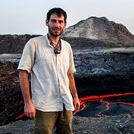Magma Ascent and Evolution: Insights from Petrology and Geochemistry
A special issue of Minerals (ISSN 2075-163X). This special issue belongs to the section "Mineral Geochemistry and Geochronology".
Deadline for manuscript submissions: closed (20 August 2021) | Viewed by 12879
Special Issue Editors
Interests: volcanology; textural characterizations of geomaterials and their synthetic analogues using XRF, EPMA-WDS, SEM-EDS and X-Ray microtomography; degassing and solidification of silicate melts
Interests: igneous petrology; petrology of alkaline magmas; mineral-melt thermobarometry; mantle metasomatism; volatiles cycle; geodynamics
Interests: igneous petrology applied to active volcanic systems; magmatic crystallization; dynamics of volcanic feeding systems; thermobarometry; geochemistry of melt inclusions
Special Issue Information
Dear Colleagues,
Magmatism is part of the global ‘engine’ that transfers heat and matter from the Earth’s interior towards the surface. The volcanic activity controls the chemical evolution of the Earth crust and the composition of the atmosphere, providing fundamental resources for the onset of life and, at the same time, representing a threat for human beings.
The advancement in understanding the main dynamics of magmatic processes has constantly taken advantage of the continuous improvement of textural (2D and 3D) micro-imaging and petrologic experiments and analysis of trace elements, isotopes and volatile species. These investigations allowed the development of new theoretical models and robust empirical calibrations, unravelling complex dynamics in igneous systems, such as crystallization, differentiation, assimilation, mixing, storage, transport, and degassing. Still, a lot of work has to be done to get to a more precise evaluation of the interplay of these processes and the timescales at which they occur.
In this Special Issue, we encourage authors to submit the results of research aimed at understanding the physico-chemical behaviour of magmas at pre-, syn-, and post-eruptive conditions. Contributions may embrace a broad spectrum of disciplines applied to both natural and synthetic products, such as petrology, geochemistry, mineralogy, and volcanology.
Dr. Gabriele Lanzafame
Dr. Federico Casetta
Dr. Pier Paolo Giacomoni
Guest Editors
Manuscript Submission Information
Manuscripts should be submitted online at www.mdpi.com by registering and logging in to this website. Once you are registered, click here to go to the submission form. Manuscripts can be submitted until the deadline. All submissions that pass pre-check are peer-reviewed. Accepted papers will be published continuously in the journal (as soon as accepted) and will be listed together on the special issue website. Research articles, review articles as well as short communications are invited. For planned papers, a title and short abstract (about 100 words) can be sent to the Editorial Office for announcement on this website.
Submitted manuscripts should not have been published previously, nor be under consideration for publication elsewhere (except conference proceedings papers). All manuscripts are thoroughly refereed through a single-blind peer-review process. A guide for authors and other relevant information for submission of manuscripts is available on the Instructions for Authors page. Minerals is an international peer-reviewed open access monthly journal published by MDPI.
Please visit the Instructions for Authors page before submitting a manuscript. The Article Processing Charge (APC) for publication in this open access journal is 2400 CHF (Swiss Francs). Submitted papers should be well formatted and use good English. Authors may use MDPI's English editing service prior to publication or during author revisions.
Keywords
- plumbing system
- magma evolution, crystal texture
- thermobarometry
- magma mush
- magmatic petrology
- volcanology
Benefits of Publishing in a Special Issue
- Ease of navigation: Grouping papers by topic helps scholars navigate broad scope journals more efficiently.
- Greater discoverability: Special Issues support the reach and impact of scientific research. Articles in Special Issues are more discoverable and cited more frequently.
- Expansion of research network: Special Issues facilitate connections among authors, fostering scientific collaborations.
- External promotion: Articles in Special Issues are often promoted through the journal's social media, increasing their visibility.
- e-Book format: Special Issues with more than 10 articles can be published as dedicated e-books, ensuring wide and rapid dissemination.
Further information on MDPI's Special Issue polices can be found here.







